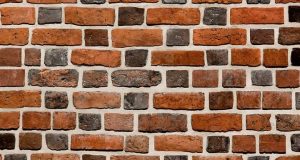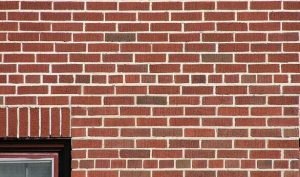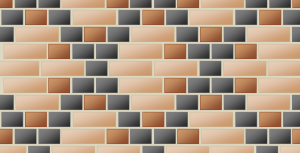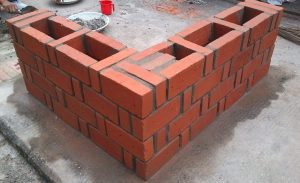Brick Bonds | Working, and 10 Types of Brick Bonds
Brick Bonds
The brick bonds are the designs in which bricks are laid and used in the walls, brick paving for paths and patios and concrete blocks, and other kinds of masonry constructions.
In maximizing the strength & durability of the structure to enhance the visual appeal and bring uniformity to the design and composition, brick bonds play a huge role.
Genau wie in einem Ethereum Casino, wo technologische Innovation auf Unterhaltung trifft, fungieren Ziegelverbindungen als Grundgerüst, sorgen für eine solide Struktur und verleihen gleichzeitig einen ästhetischen Wert.

There are many types of brick bonds with their unique look, challenges of installation, and structural considerations in walls.
Brick Bonds Working:
Most of the brick bonds require bricks or other masonry units of at least compatible sizes or the same size, and uniform sizing creates a regular, repeatable pattern that can be applied over any size of the area.
Many bond patterns include some method of interlocking each row of brick to the neighboring courses, and the stacks can easily topple if you stack up bricks in single-file columns.
To make a mortared wall even more substantial, the bond adds strength to the construction, and keep in mind that the thickness of the mortar is added to the unit size of each brick when using mortar between bricks.
Types of Brick Bonds:
There are the following types of brick bonds as given below;
- Stretcher Bond
- Header Bond
- English Bond
- Flemish Bond
- Stack Bond
- Dutch Bond
- Common Bond
- Facing Bond
- Diagonal Bond
- Rat Trap Bond
Stretcher Bond:
In a stretcher bond, all the bricks are laid as lengthwise stretchers and one of the most common brick bonds and also known as running bonds.

When walls of half brick thickness need to be constructed, stretcher bond is suitable, and by using this kind of bond, different types of wall, construction is done such as;
- Sleeper walls
- Partition walls
- Division walls
- Chimney stacks
For stand-alone structural walls, stretcher bonds are not very suitable, but these are very useful for the construction of walls with less thickness.
Keep in mind that if the wall thickness is more than half of the total length of the brick used, this bond will fail.
Header Bond:
All bricks are constructed in the header course in header bond brick masonry, and the overlap is performed corresponding to a half-width of the bricks in this bond.

As quoins, the three-quarter brickbats are utilized in alternative courses, and for the construction of one thick brick wall, this bond is mainly used.
English Bond:
English bond essentially comprises alternating courses of headers and stretchers, and in masonry works, it is one of the most commonly utilized variations of brick bonds.

Over the stretchers in the course below, headers are laid centered, and each alternate row is vertically aligned. A quoin closer is used at the start and end of a wall after the first header to break the continuousness of vertical joints.
A quoin close is used in the corners of brick walls and is a brick that is cut lengthwise into two halves. To construct strong one brick thickness walls, this type of bond is mainly used.
Flemish Bond:
Each course is made up of alternate headers and stretchers for this type of bond, and on a stretcher above & below, each header is centered, and in the corner, every alternate course begins with a title.

The quoin closers are introduced in alternate courses next to the header for breaking the vertical joints in successive periods.
These types of brick bonds are sub-divided into two types;
- Single Flemish Bond; This type is the combination of English bond and Flemish Bond, and in every single course, the front surface of the wall is composed of Flemish bong while the back cover is composed of English cement.
- Double Flemish Bond; Both in the front and the rear elevations, this bond takes a similar appearance.
Stack Bond:
All the bricks are loaded on top of each other and held with mortar, where all bonds are perfectly aligned in these types of brick bonds.

Stack bonds are perfect for decorative purposes because of their weak masonry structure and less strength, and for walls that require transferring loads, this bond is not suitable.
Dutch Bond:
Dutch bond consists of alternate courses of headers and stretchers and is a modified form of the English cross bond. To construct strong corners along the wall which are subjected to excess loads, this bond is perfect.
In this bond, every stretcher course starts with a three-quarter brick, and in every alternate stretcher course in the header is placed after the three-quarter brick.
Common Bond:
To the English Bond, this bond is similar, but in every five or six courses, this type of bond has courses of headers inserted, and with the previous header course, header courses are centered.

Between the frosting and the backing, this header bond acts as a tie brick, and queen closers are inserted at both ends of the header courses to achieve sufficient offset in a standard common bond.
In exterior load-bearing walls, the common bond is usually used.
Facing Bond:
For thick walls, where the facing and backing are chosen to be constructed with bricks of diverse thickness facing bond is primarily adopted.
Facing bonds consists of a heading and stretching courses arranged so that one heading system comes after many testing methods. Moreover, using this bond is not uniform for the load distribution of walls because of the difference between the facing and the total facing number of joints.
Diagonal Bond:
For walls of two to four brick thickness, this bond is best suited, and at every 5th or 7th course, along with the height of the wall, this bond is usually introduced.

In this bond, bricks are placed end to end so that extreme corners of the sequence remain in contact with the stretchers.
Rat Trap Bond:
Bricks are laid on edge or placed in a vertical position instead of the conventional horizontal position in these brick bonds and create a hollow space within the wall.

Due to the internal cavity, this type of wall consumes a smaller number of materials, and to design this bond, skilled labor and extra care are needed.
